
By Marc Slattery, Principal Investigator - University of Mississippi
February 19 – March 4, 2011
The deep dive team descends toward the next target depth to conduct biodiversity surveys, water samples and photo transects. Video courtesy of Pacific Deep Reefs 2011 Exploration, NOAA-OER. Download (mp4, 14.5 MB).
This expedition on the reefs of Palau represents the culmination of ongoing collaboration between National Institute for Undersea Science and Technology/Ocean Biotechnology Center & Repository and University of New Hampshire. Specifically, the collaboration involves explorers from these institutions who use technical diving to characterize deep-reef communities and to assess the organisms for their biotechnology potential. Principal Investigator Marc Slattery and members of the exploration team have experience working in the 'Twilight Zone' of the Bahamas and Cayman Islands; and preliminary data from these studies indicate that deep-reef sponges are significantly more bioactive and biodiverse than those in the surrounding shallow reefs. To date, the Indo-Pacific deep reefs have been relatively unexplored despite the fact that this region encompasses far more biodiversity than the Caribbean. Now, the explorers on this expedition will turn their attentions to the deep reefs of Palau.
Technological limitations have restricted our studies of coral reef ecosystems to about the upper 40 meters (121 feet) of the water column. This depth corresponds to the physiological/safety limitations of standard recreational scuba diving, as well as the pragmatic limitations of submersible, remotely operated vehicle, and research-platform costs. As a result, the deep coral-reef community has been generally overlooked. In fact, we know less about this habitat than we know about many deep-sea habitats, despite the fact that the deep coral-reef communities are often biodiversity hotspots and potential refugia for many important shallow-reef species.
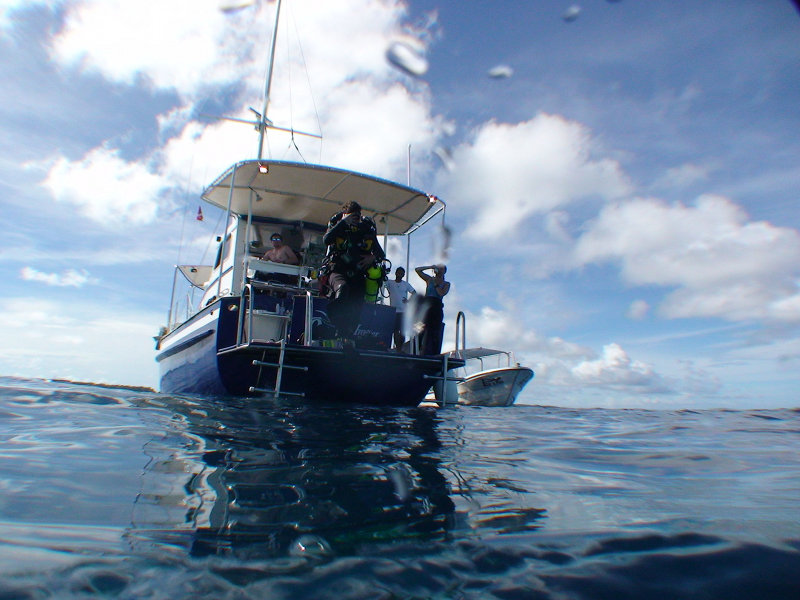
A diver prepares to enter the water off the stern of the Ocean Hunter I. Image courtesy of Pacific Deep Reefs 2011 Exploration, NOAA-OER. Download larger version (jpg, 2.4 MB).
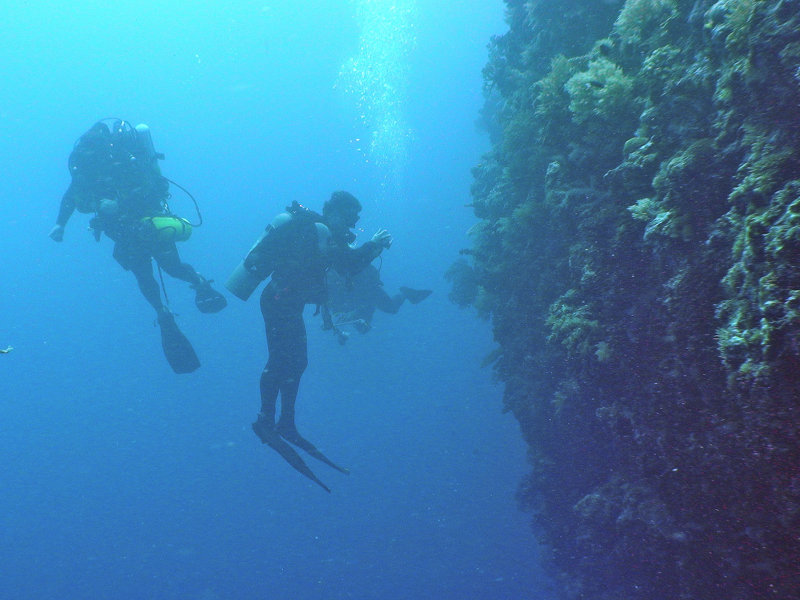
Divers survey the coral community clinging to a coral wall. Image courtesy of Pacific Deep Reefs 2011 Exploration, NOAA-OER. Download larger version (jpg, 2.7 MB).
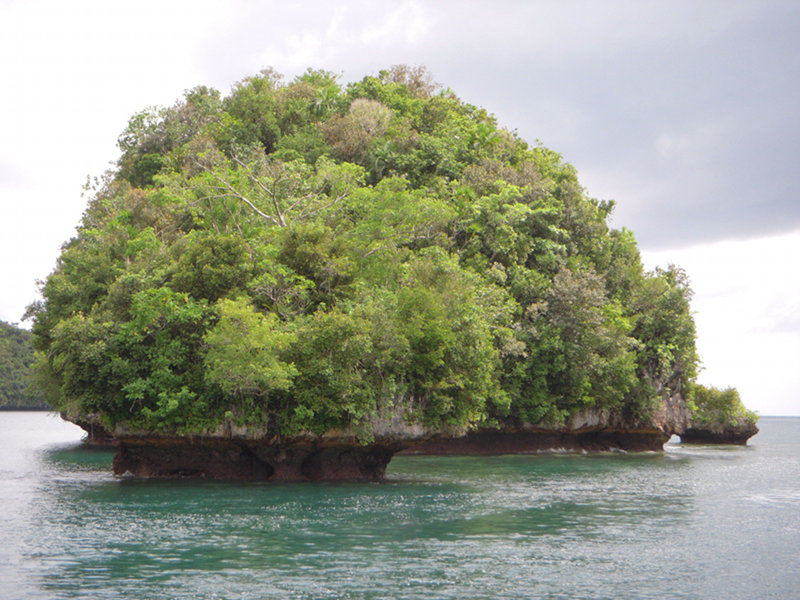
Researchers encountered this small island, which has been severely eroded by wave action. Image courtesy of Pacific Deep Reefs 2011 Exploration, NOAA-OER. Download larger version (jpg, 4.7 MB).
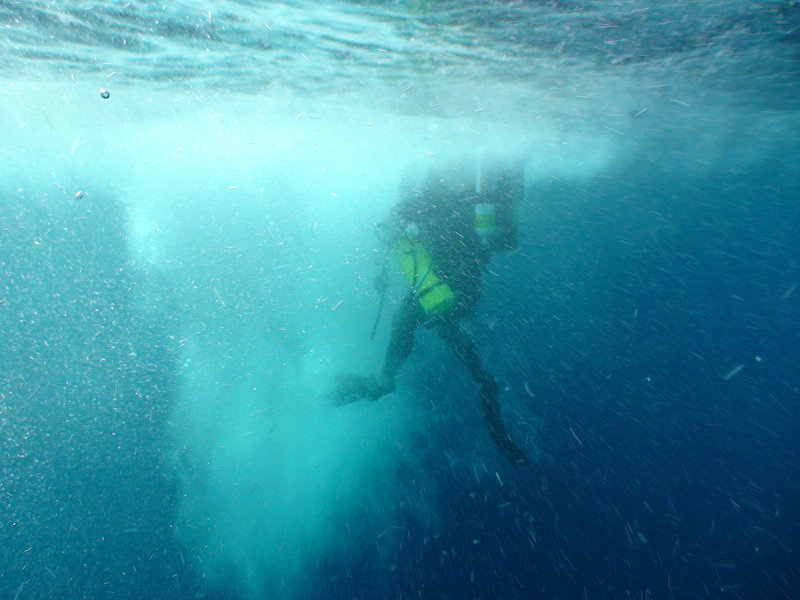
Divers plunge into the warm Pacific waters to begin their deep-reef assessment. Image courtesy of Pacific Deep Reefs 2011 Exploration, NOAA-OER. Download larger version (jpg, 2.4 MB).
The exploration plan calls for placing a technical diving team — consisting of both divers and tenders — in Peleliu and Ulong, Palau. (Respectively, their locations are 7° 5'11”N, 134°15'33'E and 7°18'48'N, 134°13'24'E.) To explore the two distinct sites, the group will use rebreathers from a past Ocean Explorer (OE) supported expedition in the Caribbean, and base operations from the Ocean Hunter I and a small chase boat.
The objectives of this project are to:
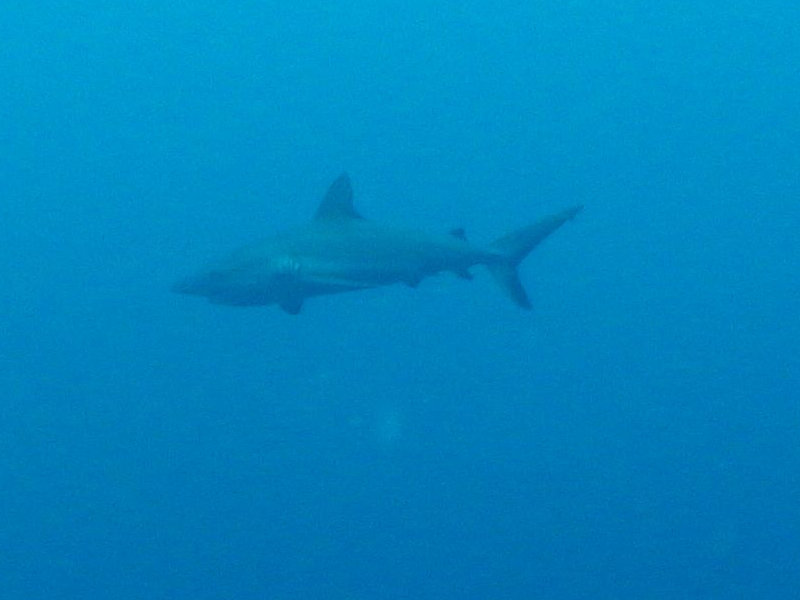
The team witnessed this reef shark cruising the midwater zone. Image courtesy of Pacific Deep Reefs 2011 Exploration, NOAA-OER. Download larger version (jpg, 1.8 MB).
This expedition represents the first multidisciplinary bioassessment of Pacific deep reefs. The team includes specialists in sponges and soft corals, hard corals, and fish. (We will coordinate our efforts with regional coral reef managers.) The work includes potential applications toward resource management (i.e., deep-reef connectivity) and biotechnology.
Finally, it focuses on three OE thematic priorities — new ocean resources, marine life inventories, and habitat characterization — and expands the breadth of our knowledge on deep reefs into the Indo-Pacific.